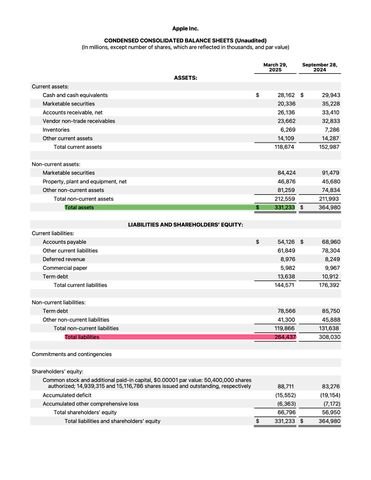How Do You Calculate a Company’s Equity?
A company’s equity is the difference between its total assets and total liabilities. Also referred to as shareholders’ equity, it is used in fundamental analysis to determine the company’s value.
Equity represents the net value of a company, or the amount of money left over for shareholders if all assets were liquidated and all debts repaid.
Key Takeaways
- A company’s equity represents its owners’ or shareholders’ residual claim to the company’s profits.
- All the information needed to compute a company’s shareholder equity is available on its balance sheet.
- It is calculated by subtracting total liabilities from total assets.
- If equity is positive, the company has enough assets to cover its liabilities.
- If equity is negative, the company’s liabilities exceed its assets. When prolonged, this is considered balance sheet insolvency.
How to Calculate Company Equity
The formula for calculating shareholders’ equity is:
Shareholder’s Equity=Total Assets−Total Liabilities
Company or shareholders’ equity can be determined by calculating the company’s total assets and liabilities. For example, the equity of a company with $1 million in assets and $500,000 in liabilities is $500,000 ($1,000,000 – $500,000).
Where to Find Data for Company Equity
As per the formula above, you’ll need to find the total assets and total liabilities to determine the value of a company’s equity. For publicly traded companies, the information required to compute company or shareholders’ equity is available on the balance sheet.
A company’s total assets include:
- Current Assets: These are very liquid assets. This means they can be converted to cash within a year. Examples include cash, accounts receivable, and inventory.
- Non-Current Assets: These are long-term assets that cannot be converted to cash or consumed within a year Examples of non-current assets are investments, property, plant, and equipment (PP&E), and intangibles like patents.
Total liabilities consist of current and long-term liabilities:
- Current Liabilities: This category is made up of debts that are typically due for repayment within one year. Accounts payable and taxes payable are types of current liabilities.
- Long-Term Liabilities: These liabilities are obligations due for repayment over a year, including bonds, leases, and pension obligations.
Note
If you own shares in a company, you own a piece of its equity value.
Why Is Company Equity Important?
Company or shareholders’ equity often provides analysts and investors with a general idea of the company’s financial health and well-being. It can be negative or positive. If it is positive, the company has enough assets to cover its liabilities. If it’s negative, the company’s liabilities exceed its assets.
As such, many investors view companies with negative equity as risky or unsafe. However, many analysts use equity in conjunction with other financial metrics to gauge the soundness of a company. When combined with other tools, an investor can use equity to accurately analyze the health of an organization.
Company equity is an essential metric when determining the return being generated versus the total amount invested by equity investors. For example, return on equity (ROE), which is the company’s net income divided by shareholders’ equity, measures how well a company’s management is using equity from investors to generate profit.
Important
If a company’s equity is negative for a prolonged period of time, it can amount to balance sheet insolvency.
Example of Company Equity
Below is the balance sheet for Apple (AAPL) as of March 2025. For that period:
- Total assets (in green) were $331.2 billion
- Total liabilities (in red) were $264.4 billion
Subtracting liabilities from assets, we see that shareholders’ equity was therefore $66.8 billion ($331.2 billion -$264.4 billion). This is the same figure reported lower on the balance sheet, under shareholder equity.
The $66.8 billion value in company equity represents the amount left for shareholders if Apple liquidated all of its assets and paid off all of its liabilities.
An alternative calculation of company equity is the value of share capital and retained earnings less the value of treasury shares.
Shareholders’ equity is an effective metric for determining the net worth of a company, but it should be used in tandem with analysis of all financial statements, including the balance sheet, income statement, and cash flow statement.
What Is a Company’s Equity?
Equity, also referred to as stockholders’ or shareholders’ equity, is the corporation’s owners’ residual claim on assets after debts have been paid.
What Is Equity on a Balance Sheet?
A company’s equity position can be found on its balance sheet, where there is an entry line for total equity on the right side of the table. This represents the net value of the company if its assets are liquidated.
How Do You Calculate Equity in a Private Company?
Unlike public corporations, private companies do not need to report financials or disclose financial statements. Nevertheless, the owners and private shareholders can still compute the firm’s equity position using the same formula and method as with a public one.
What Is the Formula to Calculate Equity?
Company or shareholders’ equity is equal to a firm’s total assets minus its total liabilities. It can also be calculated as the sum of its share capital and retained earnings, minus its treasury shares.
What Is Included in Total Equity?
Total equity effectively represents how much a company would have left over in assets if the company went out of business immediately.
The Bottom Line
Equity represents the stake that shareholders have in a company. If you want to calculate the value of a company’s equity, you can find the information you need from its balance sheet. Locate the total liabilities and subtract that figure from the total assets to give you the total equity.
Shareholders consider this to be an important metric because the higher the equity, the more stable and healthy the company is likely to be.

